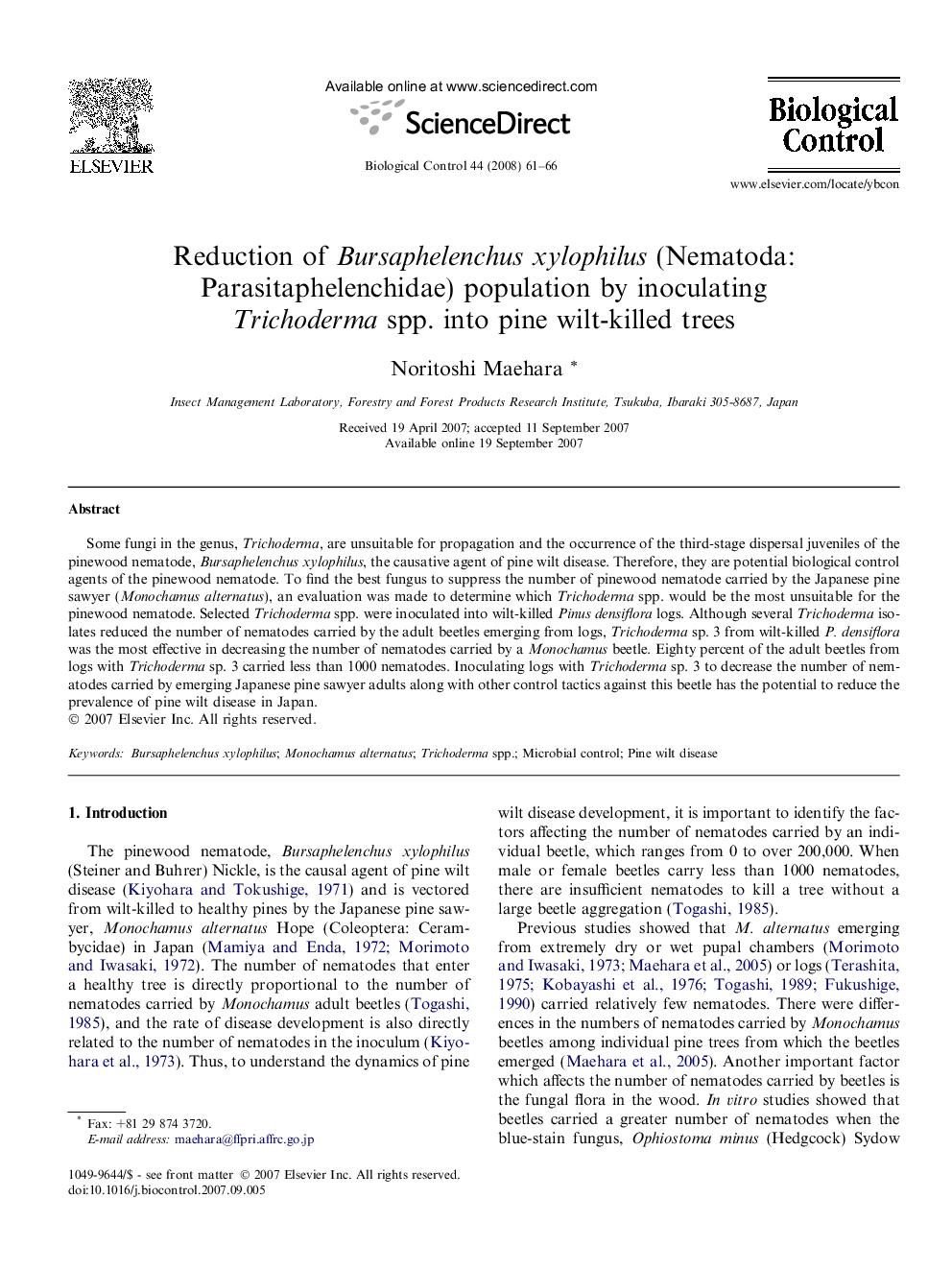| Article ID | Journal | Published Year | Pages | File Type |
|---|---|---|---|---|
| 4504880 | Biological Control | 2008 | 6 Pages |
Some fungi in the genus, Trichoderma, are unsuitable for propagation and the occurrence of the third-stage dispersal juveniles of the pinewood nematode, Bursaphelenchus xylophilus, the causative agent of pine wilt disease. Therefore, they are potential biological control agents of the pinewood nematode. To find the best fungus to suppress the number of pinewood nematode carried by the Japanese pine sawyer (Monochamus alternatus), an evaluation was made to determine which Trichoderma spp. would be the most unsuitable for the pinewood nematode. Selected Trichoderma spp. were inoculated into wilt-killed Pinus densiflora logs. Although several Trichoderma isolates reduced the number of nematodes carried by the adult beetles emerging from logs, Trichoderma sp. 3 from wilt-killed P. densiflora was the most effective in decreasing the number of nematodes carried by a Monochamus beetle. Eighty percent of the adult beetles from logs with Trichoderma sp. 3 carried less than 1000 nematodes. Inoculating logs with Trichoderma sp. 3 to decrease the number of nematodes carried by emerging Japanese pine sawyer adults along with other control tactics against this beetle has the potential to reduce the prevalence of pine wilt disease in Japan.
